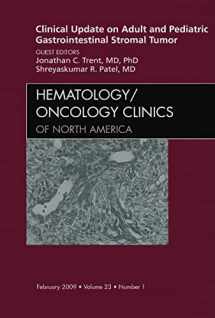
Clinical Update on Adult and Pediatric Gastrointestinal Stromal Tumor, An Issue of Hematology/Oncology Clinics (Volume 23-1) (The Clinics: Internal Medicine, Volume 23-1)
Book details
Summary
Description
Most doctors believe gastrointestinal stromal tumors (GISTs) start in special cells found in the wall of the GI tract, called the interstitial cells of Cajal (ICCs), or in very early cells that can develop into ICCs. ICCs are part of the autonomic nervous system, which sends signals to the GI tract. Some have called these cells the "pacemakers" of the GI tract because the nerve signals they send cause muscles of the digestive organs to contract, which helps to move food and liquid through the GI tract. This issue is an important one because GISTs are rare and are quite different in their outlook for survival and their treatment than other gastrointestinal tumors. For these reasons, oncologists need to figure out whether a patient has a GIST, an adenoma, an adenocarcinoma, a neuroendocrine cancer, some other type of tumor, or a non-cancerous condition. By presenting state-of-the-art information on the diagnosis, treatment, and management of GISTs, this issue serves as an important guide to oncologists as they work with patients to make make informed decisions about treatment options.


We would LOVE it if you could help us and other readers by reviewing the book
Book review



